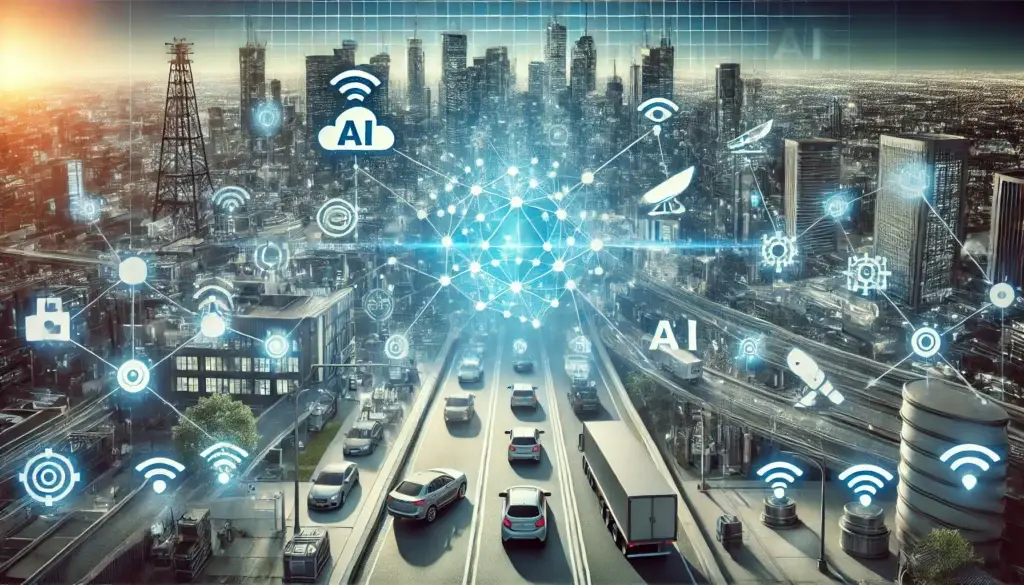
The Rise of AI-Powered Edge Computing
Edge computing is rapidly transforming the way businesses and industries process data. With the integration of artificial intelligence (AI), edge computing is becoming more powerful, enabling faster decision-making, reduced latency, and improved efficiency for IoT applications, smart cities, autonomous vehicles, and industrial automation.
Introduction
As industries strive for real-time data processing and low-latency applications, the combination of artificial intelligence (AI) and edge computing is emerging as a game-changer. This fusion is allowing devices to process data closer to the source, eliminating the need for constant cloud communication and making systems more autonomous, responsive, and secure.
In this blog, we will explore how AI-powered edge computing is reshaping technology, its applications, and why businesses should be paying close attention to this trend.
What is AI-Powered Edge Computing?
Edge computing refers to the practice of processing data near the source—on IoT devices, industrial machines, or local servers—rather than sending it to centralized cloud data centers. This method reduces latency, improves response times, and minimizes bandwidth usage.
When combined with AI, edge computing becomes even more powerful. AI algorithms can analyze and interpret data locally, enabling real-time decision-making without relying on an internet connection. This is crucial for applications like autonomous vehicles, healthcare devices, and industrial automation.
Why is AI at the Edge a Big Deal?
Several key factors are driving the adoption of AI-powered edge computing:
✅ Ultra-Low Latency
AI at the edge processes data instantly, ensuring faster responses in critical applications like autonomous driving, security surveillance, and industrial automation.
✅ Bandwidth Optimization
By processing data locally, AI reduces the need for continuous cloud communication, saving bandwidth and reducing operational costs.
✅ Enhanced Security & Privacy
Sensitive data remains on local devices instead of being transmitted to cloud servers, reducing exposure to cyber threats and enhancing privacy compliance.
✅ Scalability & Efficiency
With AI handling real-time processing on edge devices, systems become more scalable and resilient, improving overall efficiency.
Key Applications of AI-Powered Edge Computing
📡 Smart Cities
AI-powered cameras, traffic sensors, and smart lighting systems analyze data on-site, optimizing traffic flow, reducing energy consumption, and enhancing public safety.
🚗 Autonomous Vehicles
Self-driving cars rely on AI at the edge to process sensor data in real time, making split-second decisions without needing cloud access.
🏭 Industrial Automation
Factories leverage AI-driven edge computing for predictive maintenance, process optimization, and quality control in real-time.
🏥 Healthcare & Wearables
Medical devices and wearables use AI to analyze patient data instantly, enabling faster diagnoses and real-time health monitoring.
🔒 Cybersecurity & Surveillance
AI-enhanced edge devices detect threats and anomalies in real-time, improving security in both digital and physical environments.
Challenges & Future Outlook
While AI-powered edge computing offers immense potential, some challenges remain:
- Hardware Limitations – Edge devices need powerful yet energy-efficient AI chips.
- Data Management – Handling and synchronizing data across multiple edge devices can be complex.
- Security Risks – Local processing reduces cloud exposure but introduces new security challenges at the device level.
Despite these hurdles, the market for AI at the edge is expected to grow exponentially, driven by advancements in 5G connectivity, AI processors, and IoT adoption.
Final Thoughts
AI-powered edge computing is revolutionizing industries by making devices smarter, faster, and more efficient. As businesses embrace this trend, they can unlock new possibilities in automation, cybersecurity, healthcare, and beyond.
Are you ready for the future of edge AI? 🚀
Stay tuned for more insights on emerging technologies right here on our blog!
Illustration: AI-Powered Edge Computing in Action
Below is an image that represents AI-powered edge computing—highlighting its applications in autonomous vehicles, smart cities, and industrial automation.
Here is an illustration depicting AI-powered edge computing in action, showing a futuristic city with interconnected IoT devices, autonomous vehicles, and industrial automation processing data locally. Let me know if you’d like any modifications! 🚀

